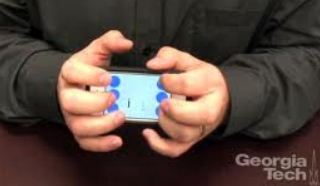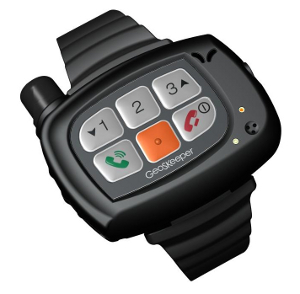Often the focus for users of assistive technology falls squarely on mastering productivity applications like Microsoft Office or efficiently surfing the Web and checking e-mail. Yet we know that all work and no play makes for a rather dull day. Playing online games is not only a great way to kill time, it can help a newer computer user become more adept at using technology.
For many years, sighted Internet users have enjoyed participating in multiplayer games with their friends, family or even complete strangers. People who are blind or visually impaired haven't had the same opportunities, since mainstream gaming sites have been largely inaccessible via standard screen access software. While some online services such as All in Play were available, these sites usually required the payment of a fee to play. Sighted users, on the other hand, were able to access a multitude of gaming Websites for free.
Recently, two online multiplayer gaming platforms, RS Games and QuentinC Playroom, have changed the landscape for users of assistive technology, offering a wide variety of card and board game titles for free through their services. In this review, we'll look at both services from the accessibility and entertainment perspective.
Overall Operation
RS Games and QuentinC follow the same general process. You download to your computer a client that connects you to the game services. This method makes it easy for the services to add new games, fix bugs, and control the flow of the game. Once the client is downloaded, you gain access to all of the currently available games.
Dozens of players are usually logged in at any given time, but most games also support bots, or computer-driven opponents, so there is always someone to start a new game with. The bots have varying levels of skill, depending on the game chosen.
Both gaming platforms are run by volunteer programmers, so phone support lines are not available. You can request support via e-mail or the user forums, but it may take some time for a response. The game servers may crash every now and again, with service restored within a few minutes to a few hours.
RS Games
RS Games is a simple-to-use gaming platform that currently offers seven titles: Monopoly, Uno, Yahtzee, Blackjack, Battleship, 1000 Miles, and Apples to Apples. To play, visit the RS Games website and fill in a simple form to create an account.
You can download the game client for Windows, Linux, or Mac operating systems, or play online using the Website. We used the Windows client in our tests, and it hooked directly into several screen readers, providing audible feedback while moving through the menus or playing a game. Those wishing to play using sight will need to visit the Website, as the client does not offer a visual layout.
Creating an account and logging in was a simple process, and we were up and running within minutes. The menu structure was simple to follow, and we were given the opportunity to select a game and then either create a new game or join an existing game started by another user. The W key gives a list of users currently logged in, so you can see who else may be available to play. Password-protected private tables are also available. For the competitive folks, scoreboards are included with most games to track the best players and high scores. Rules for each game are also available from within the client.
The offerings at RS Games are generally menu-driven. When it's your turn in Monopoly, for example, you will be prompted to choose from several options such as rolling the dice or buying houses. Hotkeys are available to obtain game information, such as your current cash on hand or your current properties. There was no way to get a list of keyboard commands from within the game, however. We found the games to be simple to play with easily understandable menus and commands.
A chat system is built into the client, allowing players to talk with each other or send private messages. You can also send a message to an administrator if you're having problems or need to report a concern.
Each game included its own set of background music, which can be adjusted during play. A streaming radio feature is also included, which provides the option of listening to an online radio station while playing.
Periodically, brief advertisements are spoken. These ads help pay for server and operating costs. The ads are infrequent and generally unobtrusive, and are spoken with an audio tone so they are easy to identify.
QuentinC Playroom
The Playroom was originally written in French , but it has now gained an English translation. The client is only available for Windows and currently includes 13 games: 1000 Miles, Uno, la Scopa, Monopoly, Poker Texas Holdem, DOminos, Bouillabaisse, Jass, Battleship, Connect 4, Reversi, Yahtzee, and Chess. Game instructions are available on the Website, though half of the games did not have available English instructions. That said, the games generally use a consistent layout and they are pretty easy to learn.
Again, creating an account on the QuentinC Playroom Website was a breeze, and logging in using the client was a painless process. From the main menu, you can elect to create a new table or join an existing table. You will then be prompted for the table to create or join. While games in the Playroom can't be password-protected, you can hide a table and then invite the people you wish to play with a hotkey.
While in a game, there are three main windows: the main game area, a chat box, and the game history. The main game area is where all of the commands for the game are entered. The chat window allows you to talk to your opponents while the game history lets you review the complete log for your current session. Pressing the Tab key cycles through these windows. F1 can be used to get a list of the keyboard shortcuts available.
Generally, you can use the arrow keys to browse through your cards or navigate around the game board. Hotkeys are included to check the current score, find out whose turn it is, or learn other pertinent information. The keyboard commands are consistent across the various games.
As the Playroom is available in both French and English versions, a rather unique translation feature was built into the in-game chat system. Users can type in their native language, and the game will automatically use Google's translation service to show the messages in the correct language.
The Playroom might be seen as a bit more experimental than RS Games. New games, features, and optional rules frequently appear without warning or notice, often without any documentation. Some users view this as part of the fun, while others are left a bit confused. Uno players, for example, can activate several optional rules such as stacking draw cards or playing cards that cause players to switch their hands with each other, dramatically altering the gameplay.
As of the time of this article, the Playroom was not compatible with the latest version of Window-Eyes, and we found it necessary to load another screen reader to play the games. The author is aware of the issue and is attempting to troubleshoot the problem.
Things to Consider When Playing Online Games
Like most online activities, there are some risks inherent to engaging in a multiplayer gaming platform. Never give out personal information such as your address or phone number to someone you don't know. Also, remember that your conversations can be seen by others or game administrators, so don't write anything that may be confidential or cause undo harm. The game rooms are generally not moderated. While abusive users can be, and frequently are, banned, such types may appear from time to time. If you're planning on letting a child play these games, be sure to maintain close supervision while they're using these sites, and clearly explain the dos and don'ts of online gaming.
Training Opportunities
Both systems are an excellent way to teach basic computer skills. New computer users can learn the location of function keys, how to issue multiple-key commands, and general typing skills in a fun and entertaining environment.
The Bottom Line
If you're looking to get away from the daily grind or just need something new to do with your spare time, give these games services a try. We found the learning curve to be quite short, and were playing within a matter of minutes. Who knows, you may learn something along the way.
Product Information
Site: RS Games.
Cost: Free, advertiser supported.
Site: QuentinC Playroom.
Cost: free.


